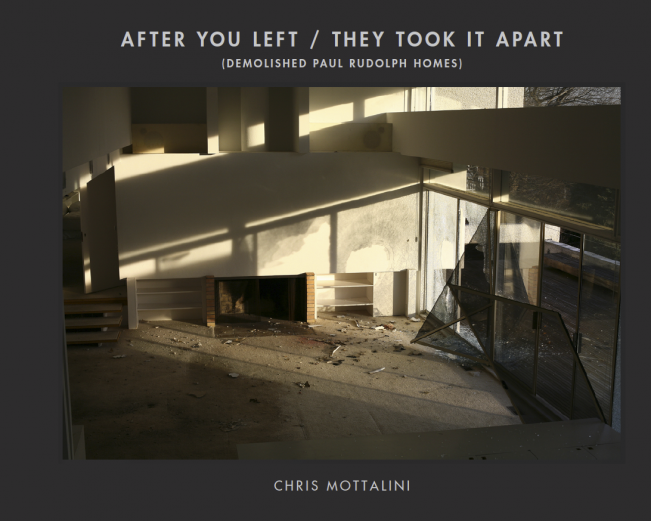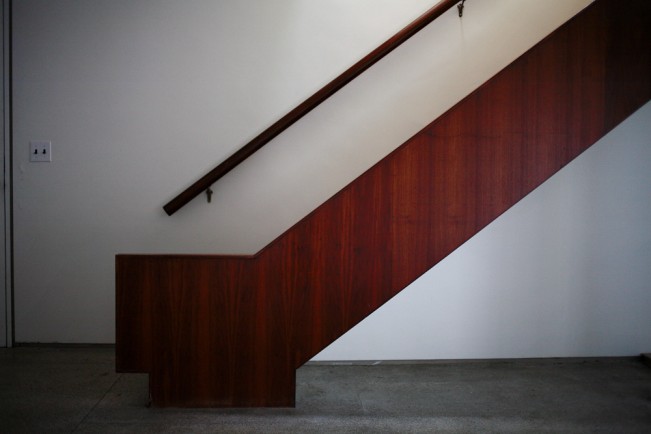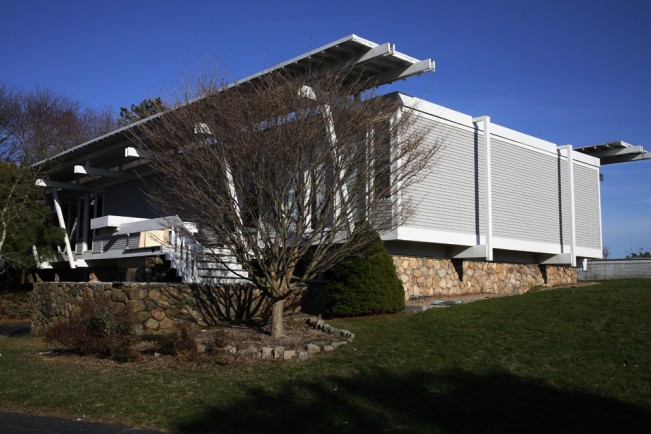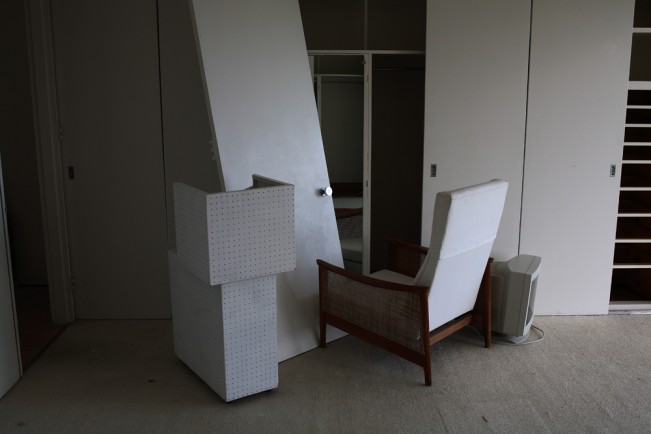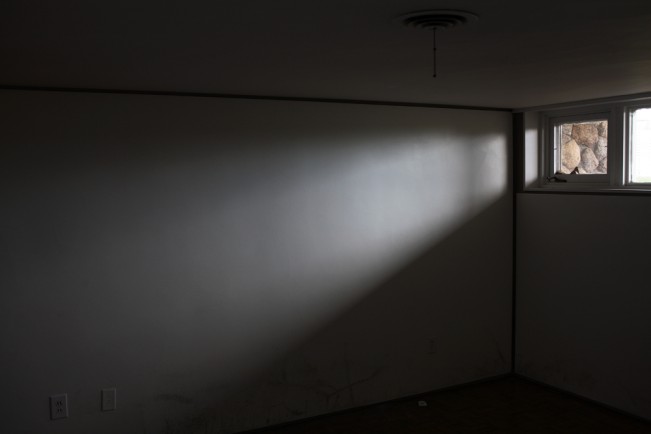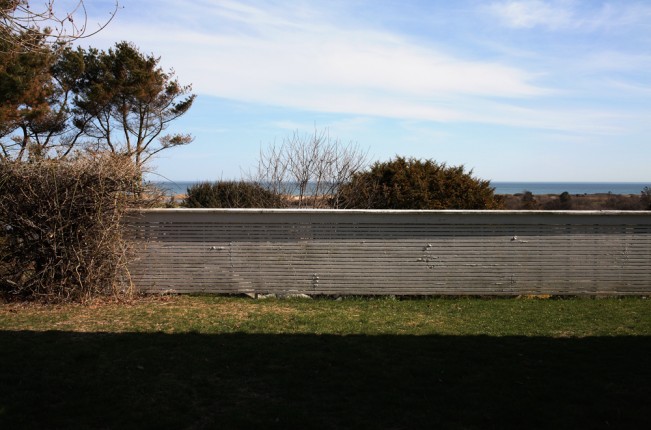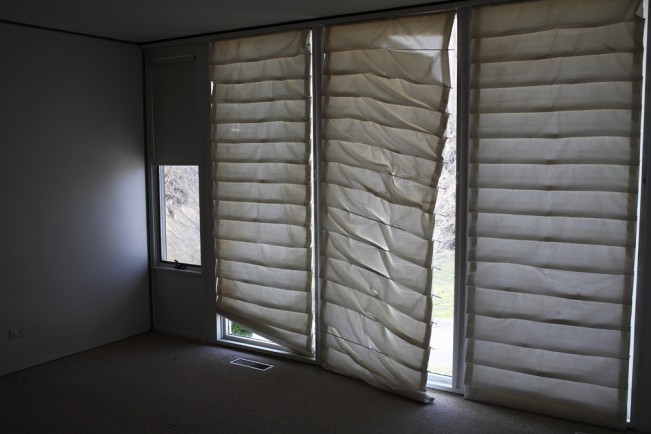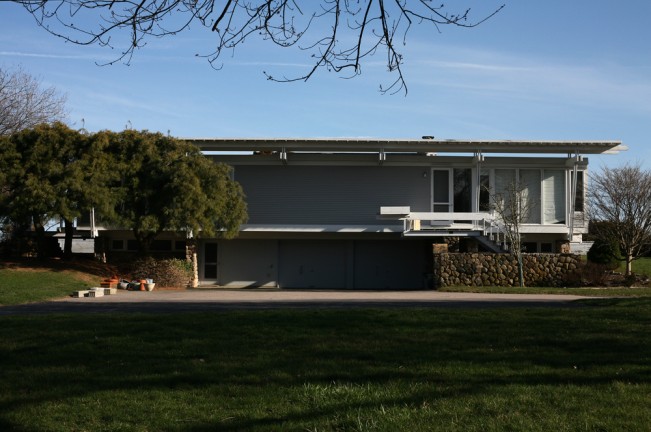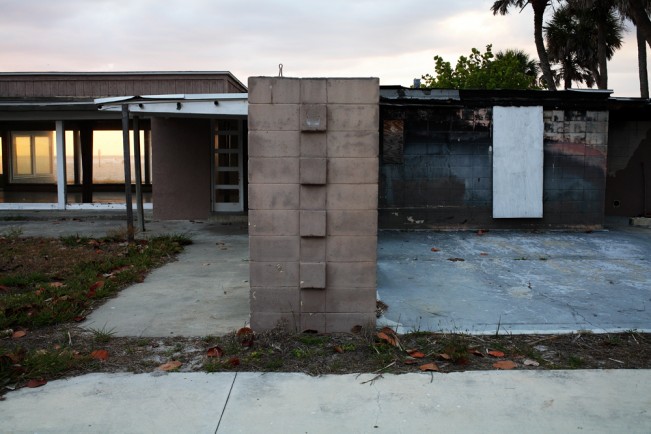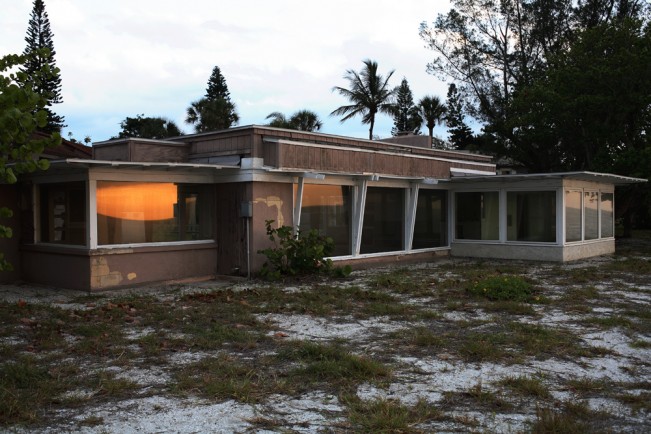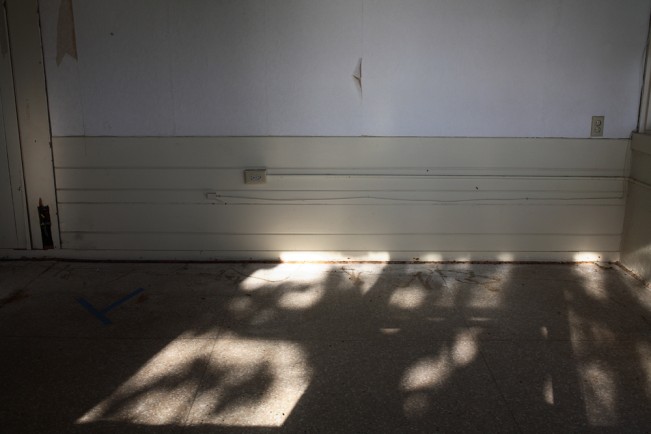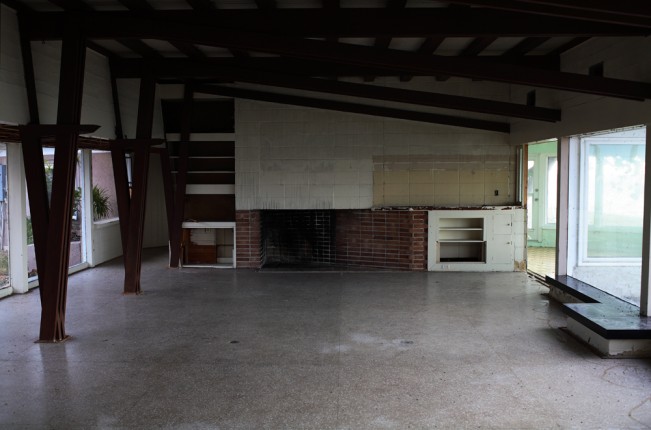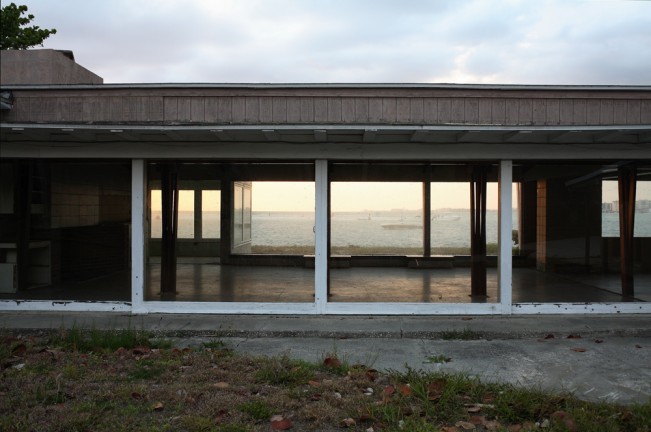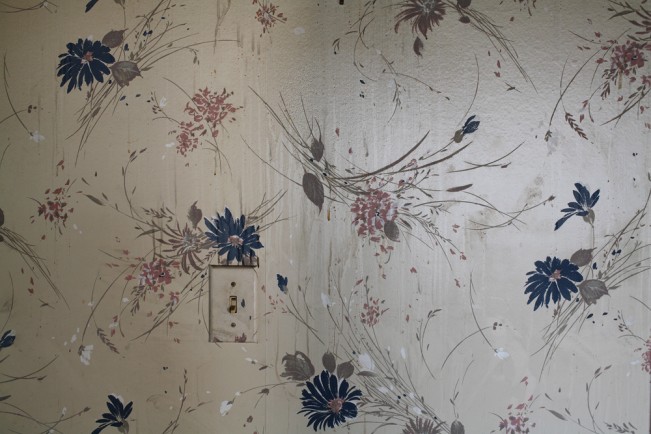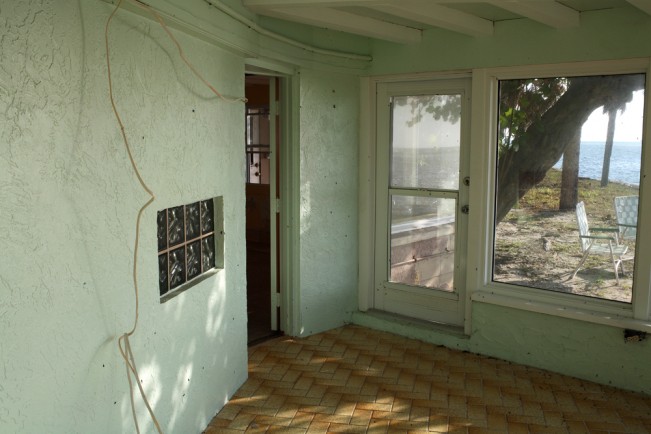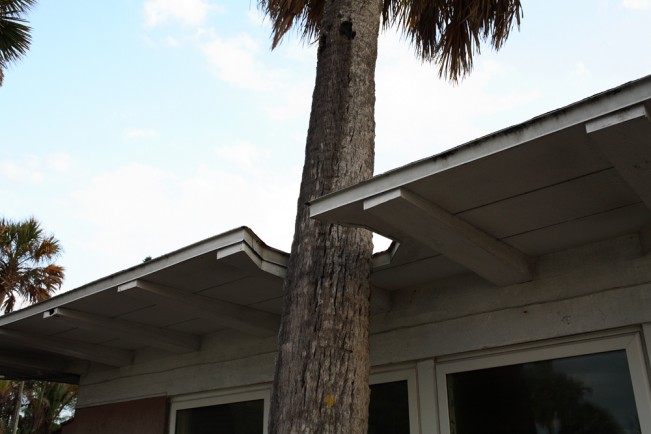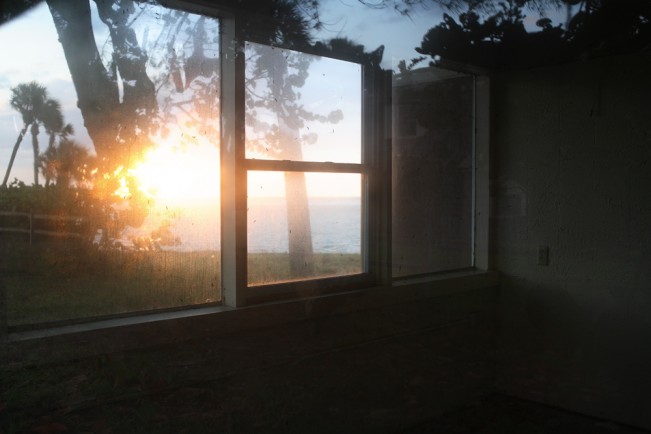Chris Mottalini: After You Left/They Took It Apart
Having grown up in a neighborhood rich with mid-century architecture, I was immediately interested in Chris Mottalini’s project, After You Left/They Took It Apart, about Paul Rudolph homes. These streamlined architectural masterpieces have been rejected, abandoned, and “deconstructed” (i.e. demolished), a fact that reflects America’s fickle relationship with contemporary design and modernism. While taste is subjective and personal, and contemporary architecture sometimes has a shorter aesthetic life span (think of post modern buildings from the laste 1980’s) than traditional or classic expressions, we have unfortunately lost so many significant architectural icons to the taste of next buyer. Ironicly, Chris’ photographs are now the main documentation and proof of these three Paul Rudolph homes.
Chris has just released his first monograph under the same title, After You Left/They Took It Apart, published by Columbia College Chicago Press. The book can be purchased through University Chicago Press or Amazon. Chris recently closed an exhibition at Chulalongkorn University, Bangkok, Thailand, and just opened one at the Reform Modern Gallery in Los Angeles, California that runs through November 30th. He will open another exhibition in November at the Lewis Glucksman Gallery at Cork University, Ireland.
Chris grew up in Buffalo, New York and lives in Brooklyn. He studied photojournalism at the University of Colorado, Boulder and Uppsala University, Sweden. His architecturally themed photographs have been exhibited by the MoCP in Chicago, Jack Shainman Gallery, the Julius Schulman Institute, “The Landing” at Reform Modern Gallery, Chulalongkorn University in Bangkok, Auburn University, Foto Colectania and the Bolit Center in Spain, Colgate University, and more. His work has been widely published (Pin-Up, Casa Vogue, Abitare, New York, The Atlantic Cities, etc.)
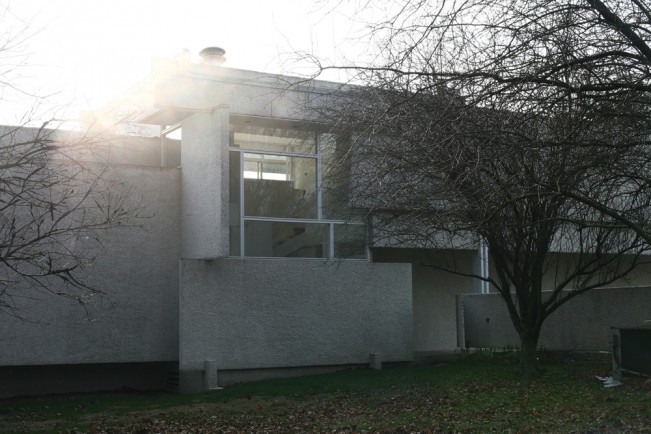 I was pretty much hooked from the moment I walked into my very first Paul Rudolph home (The Micheels House in Westport, CT). That experience led me to become fascinated with Rudolph and his work, to photograph many other Rudolph projects all over the country, to publish a book, heck it even got my girlfriend and I together.
I was pretty much hooked from the moment I walked into my very first Paul Rudolph home (The Micheels House in Westport, CT). That experience led me to become fascinated with Rudolph and his work, to photograph many other Rudolph projects all over the country, to publish a book, heck it even got my girlfriend and I together.
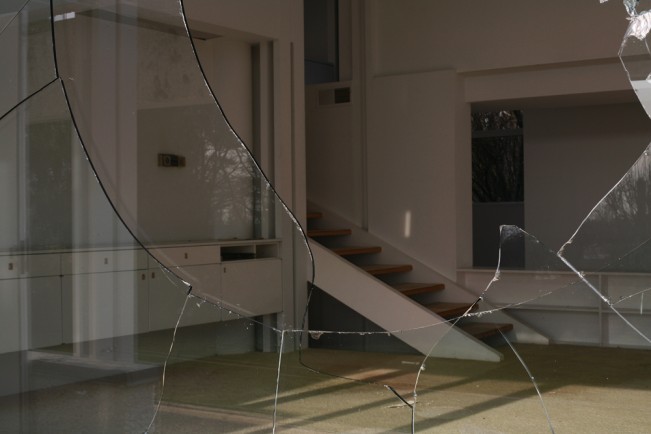 When the Paul Rudolph Foundation first asked if I would take some pictures of the Micheels house (in Westport, CT….also where my parents first met), I’ll admit that I didn’t know much about him or his work at that point. I grew up in Buffalo and was relatively knowledgeable when it came to architecture and Modernism, given the wealth of great architecture in that city (Lloyd Wright, Saarinen, Sullivan, Rudolph, etc.)….somehow, though, Rudolph just didn’t make it onto my radar. However, just opening the front door and walking into that first beautiful, tragic house was all it took.
When the Paul Rudolph Foundation first asked if I would take some pictures of the Micheels house (in Westport, CT….also where my parents first met), I’ll admit that I didn’t know much about him or his work at that point. I grew up in Buffalo and was relatively knowledgeable when it came to architecture and Modernism, given the wealth of great architecture in that city (Lloyd Wright, Saarinen, Sullivan, Rudolph, etc.)….somehow, though, Rudolph just didn’t make it onto my radar. However, just opening the front door and walking into that first beautiful, tragic house was all it took.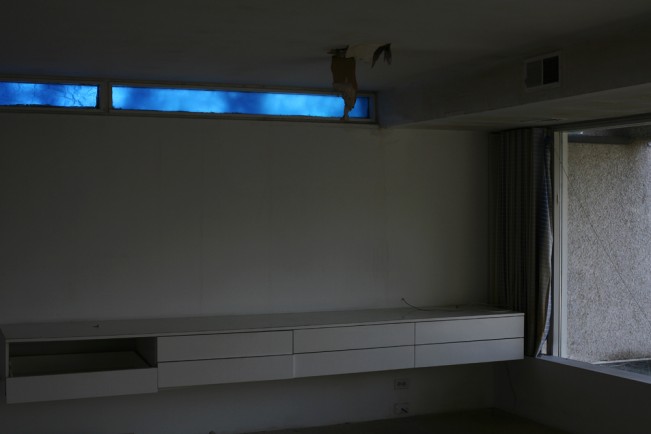 I went on to photograph as many Rudolph homes and buildings as I could get my hands on….I’ve photographed Rudolphs from Niagara Falls, NY to Boston, MA to Auburn, AL to Sarasota, FL, etc. (probably around thirty in total). The Rudolph Foundation helped me to gain access to many of these homes and buildings. In the case of the Micheels house, though I was given access by the new owners (they bought the home for the property and, as far as I know, always intended to demolish it), I guess they got sick of people meddling in their business and ended up calling the cops to have me removed from the property. Earlier that same day, while I was in town getting lunch and waiting for the light to change, the owner’s buddies came by and trashed the house, breaking windows and knocking down pieces of the house with a backhoe. In one of the signature photos of the project (the image of the huge hole in the glass), the glass was still crackling loudly while I took the photo.
I went on to photograph as many Rudolph homes and buildings as I could get my hands on….I’ve photographed Rudolphs from Niagara Falls, NY to Boston, MA to Auburn, AL to Sarasota, FL, etc. (probably around thirty in total). The Rudolph Foundation helped me to gain access to many of these homes and buildings. In the case of the Micheels house, though I was given access by the new owners (they bought the home for the property and, as far as I know, always intended to demolish it), I guess they got sick of people meddling in their business and ended up calling the cops to have me removed from the property. Earlier that same day, while I was in town getting lunch and waiting for the light to change, the owner’s buddies came by and trashed the house, breaking windows and knocking down pieces of the house with a backhoe. In one of the signature photos of the project (the image of the huge hole in the glass), the glass was still crackling loudly while I took the photo.
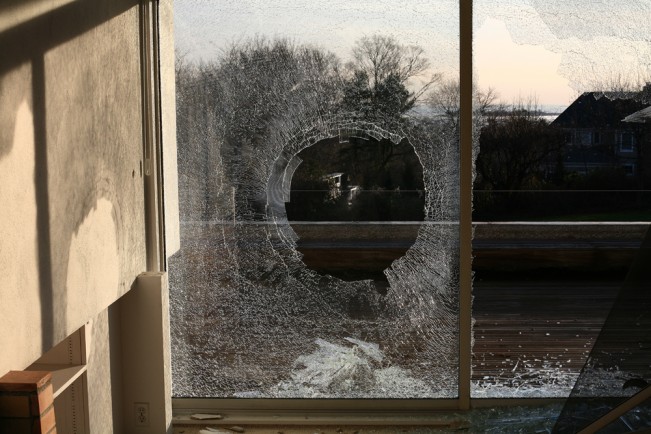 Anyway, my main focus was to photograph jeopardized and threatened Paul Rudolph homes and I set out to preserve these soon to be demolished homes in the only way I could….by taking pictures of them. I’m sure the fact that the three homes featured in my new book, After You Left/They Took It Apart (Demolished Paul Rudolph Homes) no longer exist, except in the memories of those who lived there, drawings and photographs, is a big reason for my feelings. Whatever the reason, Rudolph’s work and these three homes in particular basically changed my life. I guess my project is a sort of testament to the power of architecture…..it didn’t take much to make a believer out of me. I hope my photographs and my book will impart and pass on some of those feelings to others.
Anyway, my main focus was to photograph jeopardized and threatened Paul Rudolph homes and I set out to preserve these soon to be demolished homes in the only way I could….by taking pictures of them. I’m sure the fact that the three homes featured in my new book, After You Left/They Took It Apart (Demolished Paul Rudolph Homes) no longer exist, except in the memories of those who lived there, drawings and photographs, is a big reason for my feelings. Whatever the reason, Rudolph’s work and these three homes in particular basically changed my life. I guess my project is a sort of testament to the power of architecture…..it didn’t take much to make a believer out of me. I hope my photographs and my book will impart and pass on some of those feelings to others.
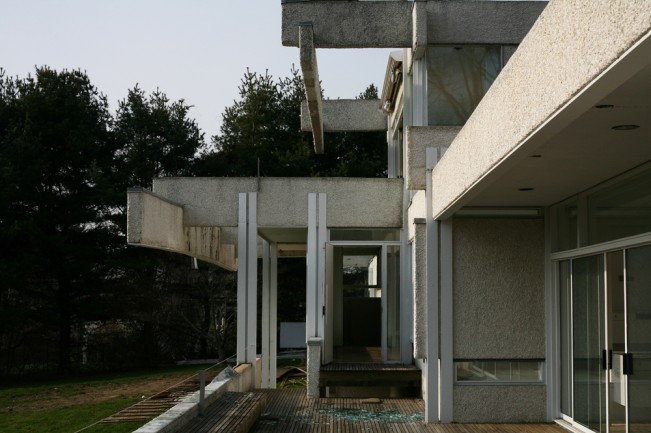 I’ve never been a big fan of the more traditional/rigid school of “architectural photography”. I often prefer shooting with 35mm format cameras, as opposed to the typical large format. I wanted these photographs to have a more intimate, free feel to them and in order to achieve that feel, I photographed the entire project without a tripod….this enabled me to wander freely throughout the homes, though some of the shots were definitely pretty difficult (for instance, the staircase profile photograph from the Cerrito house was taken in a basically dark basement). I just held my breath and tried to stay completely still for those shots. Anyway, I set out to portray these homes in a way that was different, personal and real. In addition to documenting and interpreting the homes themselves, I hoped to convey something about the personality of the man who designed them, the families who lived in them, their memories, experiences, ideas, etc. For the sake of the rapidly changing American architectural landscape, I hope my photographs will, in some way, help prevent other homes from suffering the same fate.
I’ve never been a big fan of the more traditional/rigid school of “architectural photography”. I often prefer shooting with 35mm format cameras, as opposed to the typical large format. I wanted these photographs to have a more intimate, free feel to them and in order to achieve that feel, I photographed the entire project without a tripod….this enabled me to wander freely throughout the homes, though some of the shots were definitely pretty difficult (for instance, the staircase profile photograph from the Cerrito house was taken in a basically dark basement). I just held my breath and tried to stay completely still for those shots. Anyway, I set out to portray these homes in a way that was different, personal and real. In addition to documenting and interpreting the homes themselves, I hoped to convey something about the personality of the man who designed them, the families who lived in them, their memories, experiences, ideas, etc. For the sake of the rapidly changing American architectural landscape, I hope my photographs will, in some way, help prevent other homes from suffering the same fate.
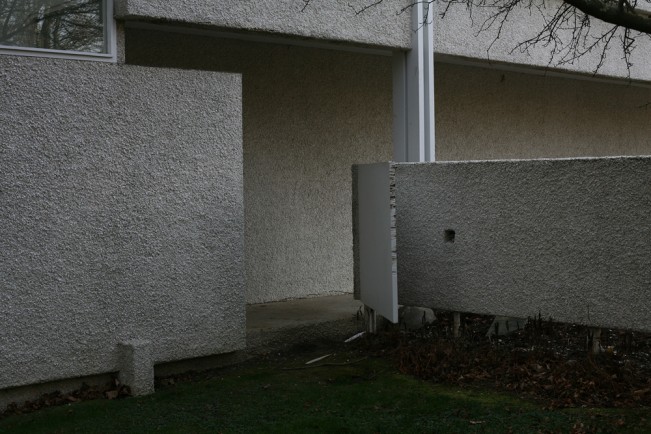
Posts on Lenscratch may not be reproduced without the permission of the Lenscratch staff and the photographer.
Recommended
-
Paccarik Orue: El MuquiDecember 9th, 2025
-
Lauri Gaffin: Moving Still: A Cinematic Life Frame-by-FrameDecember 4th, 2025
-
Dani Tranchesi: Ordinary MiraclesNovember 30th, 2025
-
Art of Documentary Photography: Elliot RossOctober 30th, 2025
-
The Art of Documentary Photography: Carol GuzyOctober 29th, 2025

